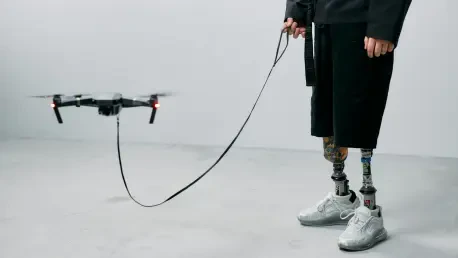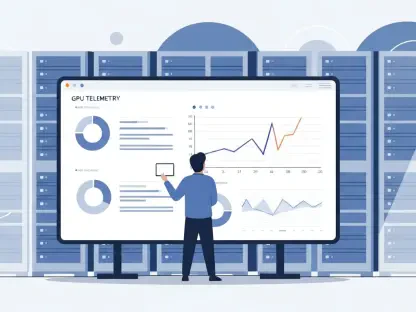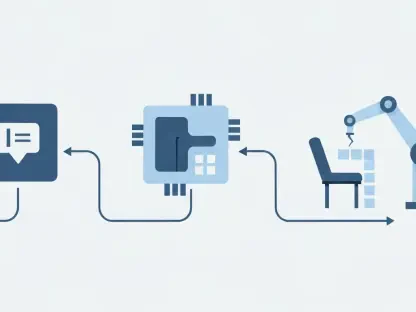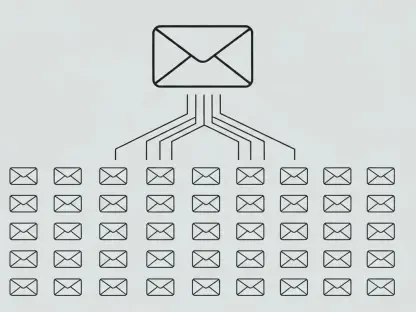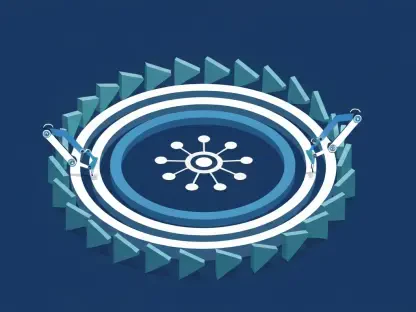Oscar Vail is a distinguished technology expert widely respected for his contributions to the fields of quantum computing, robotics, and open-source projects. In his latest endeavor, Oscar and his team have made significant strides in developing an AI-enabled adaptive control system for autonomous drones. This innovative system aims to tackle the challenges drones face in unpredictable environments, such as battling strong winds while carrying payloads. In this interview, Oscar shares insights about the motivations behind this project, the role of machine learning, and the future of autonomous drones operating in complex conditions.
What motivated you and your team to develop an AI-enabled adaptive control system for autonomous drones?
Our primary motivation stemmed from the challenges autonomous drones face when navigating through uncertain environments. Traditional methods often require detailed prior knowledge about disturbances, which isn’t feasible when conditions like sudden gusty winds can vary significantly. We wanted to create a solution that inherently understands and adapts to the complexities without needing extensive pre-programmed information.
Can you explain how your new control algorithm helps autonomous drones maintain their trajectory in unpredictable environments? How does it compare to standard methods currently in use?
Our algorithm primarily utilizes machine learning-based techniques, allowing the drone to learn from a small amount of data to adapt swiftly to environmental changes. Unlike standard methods that depend on predefined models, our approach employs a neural network model, eliminating the need for pre-known structures. This adaptive capability ensures better performance in simulations and real-world scenarios where wind conditions can be volatile.
What challenges do autonomous drones face in flight when dealing with uncertain forces like gusty winds?
Uncertain forces such as gusty winds can rapidly alter a drone’s course, making it difficult to maintain a consistent trajectory, especially when carrying heavy payloads. These conditions demand quick adaptation to minimize deviation and ensure the drone stays on its intended path. Traditional systems often lag in response, presenting an opportunity for AI-driven solutions to improve real-time adjustments.
How does machine learning play a role in your adaptive control system, and what is the significance of using a neural network model in your approach?
Machine learning, particularly through neural networks, enables our system to learn and predict how to counteract unforeseen disturbances. The neural network model allows us to develop a dynamic response mechanism without needing precise anticipation of potential disruptions. This gives our drones the ability to handle new and unique scenarios that they were not explicitly trained on.
Could you describe the concept of meta-learning and how it’s applied within your control system?
Meta-learning is essentially teaching our systems to learn how to learn. By exposing the drone to various wind speed families during training, it gains the capability to adapt to new situations using previously acquired knowledge. This process enhances flexibility and efficiency, enabling the drone to tackle different objectives with a shared, learned representation.
How does the system decide which optimization algorithm to use, and what advantages do mirror descent techniques offer over traditional methods like gradient descent?
Our system automatically selects the optimal algorithm by analyzing the geometry of the disturbances encountered. Mirror descent techniques offer an edge over traditional gradient descent by better capturing the nuances of the problem’s structure, enabling a refined response to the drone’s environment. This tailored adaptation is crucial for reducing tracking errors.
In what ways did your approach reduce the trajectory tracking error by 50% compared to baseline methods? Can you provide examples of the scenarios you tested?
Through simulations and real-world tests, our method consistently showed reduced trajectory tracking errors by efficiently adapting to varying wind speeds. For example, tests with fluctuating and unpredictable wind patterns demonstrated significant improvements in how the drone maintained its course. This was achieved by the system’s real-time capability to adjust based on learned data.
What potential applications do you foresee for your control system outside of delivering heavy parcels or monitoring fire-prone areas?
Beyond logistics and environmental monitoring, our system could enhance drones used in rescue operations, agricultural surveillance, and infrastructure inspection. The ability to adapt swiftly to changing conditions makes it invaluable in any field requiring reliable, autonomous operations under fluctuating circumstances.
Can you elaborate on the significance of the “concurrent learning” aspect of your system, and how does it contribute to the system’s effectiveness?
Concurrent learning is fundamental in simultaneous optimization and adaptation. By leveraging meta-learning, our system autonomously decides the best adaptation strategies for different disturbances in real-time. This interconnected learning enhances the overall speed and accuracy of the drone’s responses to shifting environments.
How does your control system handle scenarios it didn’t encounter during training?
Our neural network’s design to learn generalized patterns allows it to extrapolate findings from training across different situations. This capability means that even when faced with untrained scenarios, the system dynamically adjusts its controls to minimize impact on the drone’s path, ensuring robustness against unforeseen disruptions.
Were there any specific wind speed conditions or disturbances that challenged your control system the most?
The most challenging conditions came from rapid wind oscillations combined with fluctuating payload weights. Our system had to rapidly adapt its learning and mirror descent choices, showcasing the importance of flexible learning mechanisms to handle exceptionally demanding environments.
Can you discuss the real-world experiments you’ve conducted and the outcomes? How did these results compare to your simulations?
Real-world experiments confirmed the reliability of our simulations, showing similar reductions in trajectory errors under variable wind conditions. The results consistently echoed our predictions, validating the system’s capability to translate theoretical adjustments into effective practical applications.
Are there any plans to enable the system to handle disturbances from multiple sources simultaneously, such as payload shifts during flight?
Absolutely. Handling multifaceted disturbances is a natural next step. We are exploring enhancements that integrate continual learning, allowing the system to adapt dynamically to multiple concurrent disruptions without relying heavily on prior data.
What does the future hold for your research? Are there any advancements or extensions planned for your control system?
We are keen on expanding adaptive capabilities to cover a wider range of dynamic disturbances and enhancing our system with continual learning. Long-term, we may explore integrating our system across a broader spectrum of autonomous technologies, pushing the boundaries of AI-driven adaptability in real-time.
How does your work contribute to the broader field of autonomous systems operating in complex and uncertain environments?
By enabling drones to effectively navigate uncertain conditions autonomously, our work sets a precedent in developing systems that learn and adapt in real-time. This foundational shift aids in advancing autonomous systems across various industries, making them more reliable and efficient.
Could you explain the importance of mirror descent techniques in your control system design, and how they differ from previous methods?
Mirror descent techniques allow for a nuanced understanding of the problem’s geometry. They excel in adapting the adjustment algorithms to specific environmental structures, offering enhanced tracking capabilities over previous gradient descent methods. This geometrical consideration is integral to achieving our ambitious reduction in trajectory errors.
Are there any collaborators or industry partners involved in bringing this technology to practical applications?
Though primarily driven by our research team, we are currently engaging with industry partners to explore practical applications. These collaborations aim to integrate our technology into real-world operations, extending its benefits beyond academic circles.
What feedback have you received from the scientific community about your new control system?
The scientific community has shown great interest in our approach, particularly in the integration of meta-learning with adaptive control mechanisms. Our work is perceived as a potential game changer, advancing discussions on how autonomous systems can be designed to deal with intricate environments effectively.
What is your forecast for autonomous drones and machine learning?
As machine learning continues to evolve, autonomous drones will become even more integral in sectors requiring precision and adaptability. Future systems are likely to excel at real-time problem-solving across diverse, complex terrains, fundamentally transforming capabilities in logistics, surveillance, and beyond.
